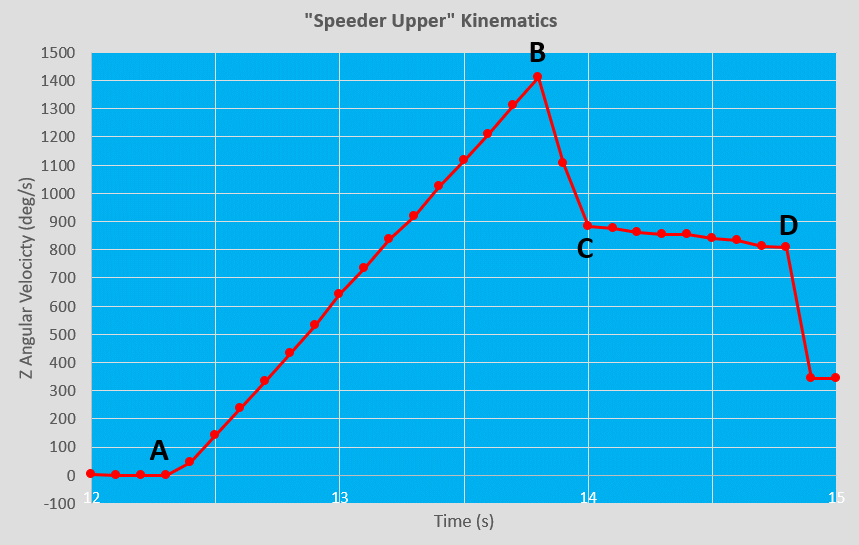Kinematics of Translational and Rotational Motion
Introduction
Empty 3D filament reels are great devices to use in the physics classroom. There's a good chance that you and your students could come up with some interesting physics lab investigations using these reels. Attach Voyager or PocketLab One to the reel as shown in Figure 1, and the possibilities are endless! This lesson describes a lab in which your students study the kinematics of both translational and rotational motion when the reel rolls down a ramp on its axle. Students are often surprised when they see the reel speed up upon reaching the floor on which the ramp rests. This speeding up of the reel gives rise to referring to the reel as a speeder upper.

Video
The short 3-second video below shows the setup for this lab combined with PocketLab app angular velocity data from a typical run of the experiment. A 4' to 6' 1x2 board serves as the ramp. A stack of books can be used to adjust the height of the ramp to any desired level. While resting on its axle, the reel is released at the top of the ramp. It rolls down the ramp. At some point on its way down, the outer rim of the reel contacts the floor, at which time the angular velocity experiences a sudden drop. What happens to the translational motion of the center of mass at this instant? Your students will investigate the answer to this question in this lab.
Questions for Student Investigation of the Kinematics of Translational and Rotational Motion
The students should make use of z-angular velocity data from the PocketLab app in their experimental analysis. A typical graph of z-angular velocity versus time for the reel is shown in Figure 2. It is important that the ramp not be too high, as this could make the angular velocity reach or exceed the maximum angular velocity (approximately 2000 degrees/second) detectable by Voyager.

Following are questions that students can address in graphs that they obtain from performing this experiment in kinematics.
- Explain what is happening during each of the following regions of the graph of Figure 2—region A to B, region B to C, and region C to D.
- What is the angular velocity in rad/s of the reel just before making contact with the floor?
- What is the translational speed of the reel just before making contact with the floor?
- What is the angular velocity in rad/s of the reel just after making contact with the floor?
- What is the translational speed of the reel just after making contact with the floor? What is the percentage increase in translational speed after contacting the floor?
- Discuss the physics of why the translational speed increased when the reel contacted the floor.
Additional Labs Making Use of Empty 3D Filament Reels
https://www.thepocketlab.com/search/node?keys=filament+reel
The smaller the radius of the axle, the more pronounced the increase in translation speed. For a similar experiment with much more pronounced increase in translational speed, check out this lesson.
The "Speeder Upper" - Translational and Rotational Motion Study

